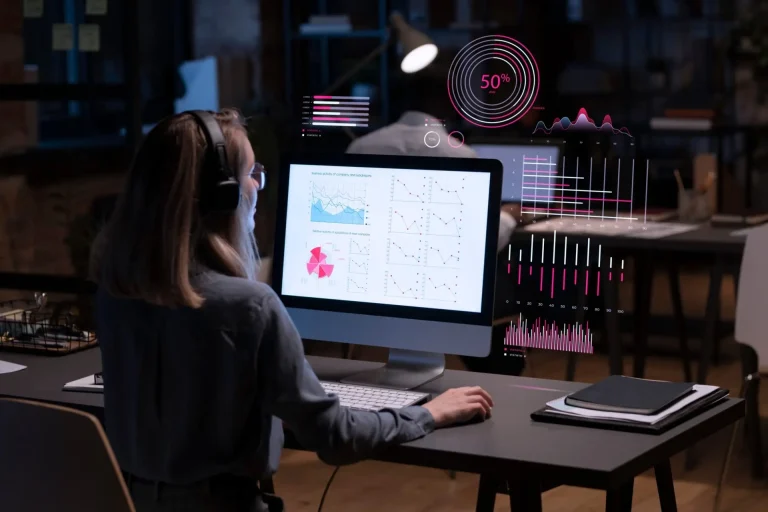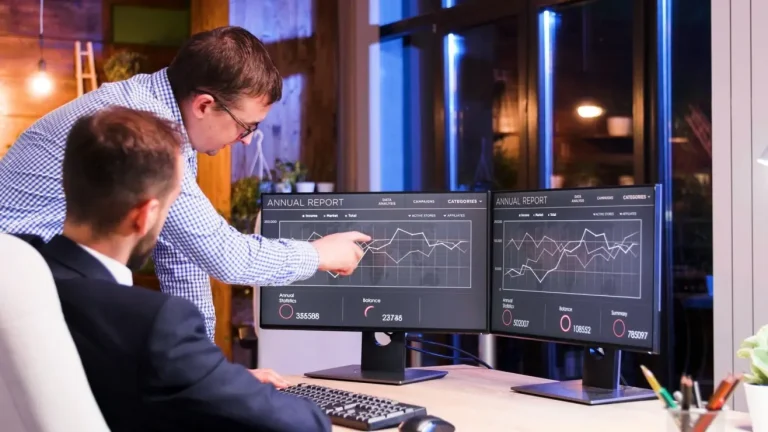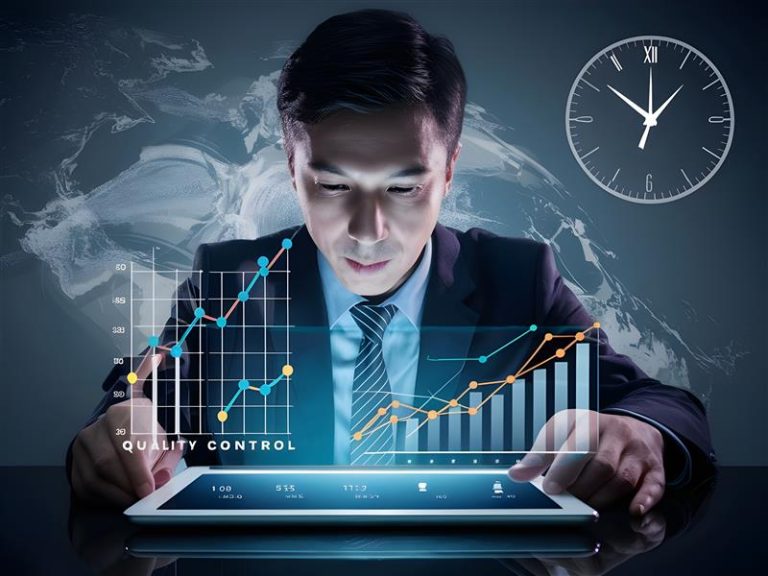The Future of Digital Marketing Automation: Developer Trends to Watch

Introduction
Digital marketing automation has evolved from being a “nice-to-have” to an essential pillar of modern business growth. Brands are no longer simply sending mass emails or running generic campaigns—they are now harnessing intelligent automation to deliver personalized experiences at scale. Behind these innovations, developers are playing a crucial role by building, integrating, and optimizing automation systems that align with ever-changing customer expectations.
As we move into the future, the landscape of digital marketing automation is poised for even greater disruption, powered by advancements in artificial intelligence (AI), machine learning, low-code/no-code platforms, APIs, and emerging data technologies. For developers and businesses alike, keeping track of these trends is not just beneficial—it’s critical for staying competitive.
In this blog, we’ll explore key developer trends shaping the future of digital marketing automation and what organizations should watch for in the coming years.
1. AI-Powered Personalization at Scale
One of the most significant shifts in digital marketing automation is the ability to personalize content, campaigns, and customer journeys with incredible precision. Developers are leveraging AI-driven algorithms to process massive datasets in real time, making it possible to deliver tailored messages based on user behavior, preferences, and intent.
Why this matters for developers:
- Integration of AI frameworks into automation tools.
- Need for real-time analytics pipelines.
- Building adaptive systems that continuously learn and improve.
As natural language processing (NLP) becomes more advanced, developers will be expected to create automation tools that not only segment audiences but also generate highly relevant, context-aware content on demand.
2. Low-Code and No-Code Platforms Empowering Marketers
While developers remain central to the innovation of automation tools, low-code and no-code platforms are enabling marketers to take more control of campaign design and execution. This trend reduces dependency on IT teams for minor adjustments, freeing up developers to focus on high-level integrations and innovation.
Implications for developers:
- Building scalable low-code frameworks with drag-and-drop features.
- Designing APIs and modules that empower non-technical users.
- Creating secure and flexible environments where business users can innovate without breaking core systems.
The future will see a blend of technical depth and user-friendly platforms, where developers architect the foundation and marketers independently run sophisticated campaigns.
3. API-First Development for Seamless Integrations
Modern marketing automation systems don’t operate in silos—they rely on smooth integrations with CRMs, analytics platforms, e-commerce systems, social channels, and more. Developers are adopting an API-first approach to ensure that automation platforms remain flexible, scalable, and adaptable to new technologies.
Developer opportunities include:
- Building universal APIs that connect multiple systems.
- Ensuring data integrity and security across integrations.
- Facilitating cross-channel workflows that create unified customer experiences.
This trend ensures that businesses can easily plug in new tools and technologies without disrupting existing workflows, future-proofing their automation strategies.
4. Predictive Analytics and Data-Driven Insights
Data is the fuel of digital marketing automation, and predictive analytics is the engine. Developers are increasingly focusing on building models that don’t just analyze past behaviors but also predict future actions.
Developer focus areas:
- Implementing machine learning pipelines to forecast trends.
- Building dashboards with real-time predictive insights.
- Integrating advanced analytics into customer journey mapping.
This shift will allow marketing automation platforms to recommend next-best actions, anticipate customer needs, and proactively adapt campaigns—delivering results that feel both personal and timely.
5. Hyper-Automation and Workflow Orchestration
The future of automation goes beyond individual tasks—it’s about connecting every moving part of marketing into a single intelligent system. Hyper-automation combines AI, robotic process automation (RPA), and advanced analytics to orchestrate complex workflows.
For developers, this means:
- Creating multi-layered automation pipelines.
- Leveraging orchestration tools to unify multiple platforms.
- Ensuring scalability so that automation grows with the business.
Hyper-automation is moving marketing closer to a “hands-free” model, where everything from lead nurturing to campaign optimization runs seamlessly with minimal manual intervention.
6. Conversational Marketing and Chatbot Development
Chatbots and conversational AI are becoming essential for customer engagement, support, and lead nurturing. Developers are focusing on building intelligent, context-aware bots that integrate with automation systems to provide real-time customer interaction.
Developer priorities:
- Enhancing chatbot NLP and intent recognition.
- Integrating bots with CRMs and marketing workflows.
- Ensuring omnichannel functionality across web, apps, and social platforms.
In the future, conversational marketing will evolve into intelligent assistants capable of nurturing leads, booking appointments, and even upselling—without requiring human involvement.
7. Privacy-First and Compliant Automation
As data privacy regulations like GDPR, CCPA, and upcoming global frameworks tighten, developers must ensure marketing automation systems are compliant by design. Privacy-first automation will become non-negotiable.
Developer responsibilities:
- Implementing secure data handling and storage practices.
- Designing consent management systems.
- Embedding compliance checks into automation workflows.
The challenge will be balancing personalization with privacy, ensuring trust while delivering tailored experiences. Developers will need to innovate ways to maintain personalization without violating data regulations.
8. Real-Time Marketing Automation with Edge Computing
With customer expectations for instant responses rising, real-time marketing automation will dominate the future. Edge computing—processing data closer to the user—will enable faster decision-making and reduce latency.
For developers, this entails:
- Building automation platforms optimized for edge environments.
- Ensuring low-latency performance for real-time personalization.
- Leveraging distributed architectures for global scalability.
This is especially crucial for industries like e-commerce, gaming, and financial services, where milliseconds can make a difference in conversion.
9. The Rise of Generative AI in Marketing Automation
Generative AI is reshaping marketing by creating personalized content, images, and even video at scale. Developers are increasingly tasked with integrating generative models into automation workflows.
Opportunities for developers include:
- Connecting generative AI APIs to automation platforms.
- Building safeguards to ensure AI-generated content is brand-compliant.
- Scaling content creation for diverse audience segments.
This trend will drastically reduce content bottlenecks, allowing businesses to produce hyper-personalized campaigns with minimal human effort.
10. Cloud-Native and Microservices Architecture
The future of marketing automation is cloud-first. Developers are moving toward microservices-based architectures, enabling modular, scalable, and resilient automation systems.
Why this matters:
- Easier scaling of automation workloads.
- Flexibility to upgrade or replace individual services without downtime.
- Improved reliability through distributed systems.
Cloud-native automation will allow businesses to innovate rapidly and adapt to changing market demands while maintaining cost efficiency.
Conclusion
The future of digital marketing automation is being written today by developers who are building smarter, faster, and more secure systems. From AI-driven personalization to API-first development, predictive analytics, and hyper-automation, these trends are setting the stage for a marketing ecosystem that is more intelligent and responsive than ever before.
For businesses, the message is clear: investing in developer-led innovation is no longer optional—it’s the only way to stay relevant in an environment where customer expectations are rising and technology is evolving at lightning speed.
The companies that thrive will be those that not only adopt automation but also embrace these forward-looking trends to craft seamless, data-driven, and future-ready customer experiences.
Table of content
- Introduction
- 1. AI-Powered Personalization at Scale
- 2. Low-Code and No-Code Platforms Empowering Marketers
- 3. API-First Development for Seamless Integrations
- 4. Predictive Analytics and Data-Driven Insights
- 5. Hyper-Automation and Workflow Orchestration
- 6. Conversational Marketing and Chatbot Development
- 7. Privacy-First and Compliant Automation
- 8. Real-Time Marketing Automation with Edge Computing
- 9. The Rise of Generative AI in Marketing Automation
- 10. Cloud-Native and Microservices Architecture
- Conclusion











1 thought on “The Future of Digital Marketing Automation: Developer Trends to Watch”
It’s fascinating to see how AI is reshaping marketing automation. The ability to personalize experiences at scale is a game-changer for businesses looking to stand out. I think the real challenge for developers will be ensuring that the systems they build are agile enough to adapt to rapidly changing consumer behavior.